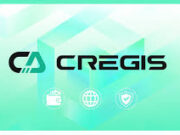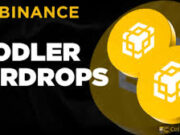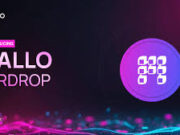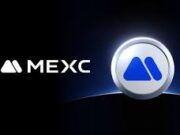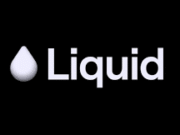In recent weeks, the crypto world has watched something significant unfold: Zcash has surged as much as 700%, signalling more than just a price move it reflects a broader shift in how privacy in cryptocurrency is being valued again. With the shielded-supply pool rising above 30% of total ZEC, the rollout of the new Zashi wallet and the integration of NEAR Intents, and the backdrop of increasing regulatory scrutiny over transparent blockchains, Zcash is stepping into a renewed narrative of privacy, freedom and technological evolution. (ForkLog)
In this post I’ll unpack what’s fueling Zcash’s rally, what it means for the broader market, the technical underpinnings behind this jump, and where things could go from here.
A Blast from the Past: Zcash and the Privacy Narrative
Before we dive into the surge, it helps to revisit what Zcash is and what it had been doing before this moment of resurgence.
Launched in 2016 as a fork of the Bitcoin codebase, Zcash introduced optional privacy using zero-knowledge proofs (specifically zk-SNARKs) to let users transact in shielded mode (hiding sender, receiver, amount) or transparent mode (just like Bitcoin). (CoinDesk)
For years, privacy coins like Zcash (and its peer Monero) held a more niche status in crypto: important philosophically but less prominent commercially.
Then regulatory attention, exchange delistings, compliance pressure, and user-experience barriers limited many privacy coins’ momentum.
Yet now: the privacy narrative has re-emerged. As regulators tighten, as data surveillance becomes more visible, as users and institutions become more aware of “transparent blockchains = less privacy,” Zcash is finding renewed relevance. (coinglass)
Catalysts Behind the Surge
So what exactly triggered this spike in Zcash adoption and price? Several key factors aligned:
1. Shielded pool expansion
One of the clearest signals came from the rise in ZEC held in the shielded pool. Data show that more than 4 million ZEC are now shielded—over roughly 30% of the total supply. (Bitget)
As the anonymity set grows, the privacy strength of the protocol improves: shielded addresses become harder to differentiate from one another, enhancing fungibility. (CoinDesk)
This is more than a nice metric: it’s a structural improvement in Zcash’s value proposition.
2. User-experience upgrades: Zashi wallet
The official wallet, Zashi, has been positioned to make shielded transactions easier and default. Reports indicate that Zashi has auto-shielding features, better hardware-wallet integration, and support for the latest protocol upgrades. (CoinDesk)
In plain terms: privacy features used to be harder to access and less seamless; now they’re becoming more convenient. That shift matters.
3. Integration with NEAR Intents and cross-chain bridges
A newer technical piece: the integration of NEAR Intents and the “CrossPay” or swap mechanism in Zashi makes it easier to get into (and out of) shielded ZEC in a privacy-preserving way across chains. (Binance)
The NEAR Intents protocol lets users execute cross-chain actions (for example “swap X → ZEC”) while keeping privacy at the core. This lowers friction, expands interoperability, and increases the number of users who can engage with Zcash’s shielded pool. (Galaxy)
4. Regulatory push and “privacy as insurance” narrative
As governments push harder on AML/KYC, central-bank digital currencies (CBDCs), on-chain transparency and data surveillance, the demand for privacy-centric alternatives is rising. Analysts point to this backdrop as a driver of Zcash’s renewed attention. (coinglass)
In other words: privacy isn’t just a niche user wish—it’s being reframed as a necessary feature in a more surveilled crypto world.
5. Tokenomics and halving dynamics
Zcash had its second halving in November 2024: block rewards dropped, inflation decreased, issuance tightened. (Binance)
A tighter supply, combined with rising demand, fosters a classic supply-demand squeeze. One must always treat supply constraints and demand surges carefully—but it contributes to the overall dynamic.
What’s the Big Move? How Is Price Jumping 700%?
When you see a 700% or more rise in price, you might ask: is this purely speculation? Is it justified by fundamentals?
Here are some thoughts:
- From a technical and adoption perspective, Zcash is moving from “privacy optional” toward “privacy more default” thanks to wallet improvements and protocol upgrades.
- From a market-sentiment perspective, the renewed narrative—privacy as a value proposition—catches attention, especially at institutional and macro levels.
- From a structural perspective, more coins being shielded means fewer are circulating in transparent form (in many cases), reducing visible liquid supply and creating tighter effective supply.
- At the same time, you can’t ignore that crypto markets are volatile: some of the move may be driven by momentum, “fear-of-missing-out,” and speculative flows. Indeed analysts warn about “exit liquidity” risk. (Galaxy)
So yes: there are strong catalysts, but the magnitude of the move also implies risk.
Why This Matters to the Broader Crypto Ecosystem
The Zcash surge is interesting not just for ZEC holders but for what it signals more broadly in crypto.
A. Privacy tokens regain credibility
For a while privacy-coins were sidelined: compliance concerns, exchange delistings, regulatory fear. Now we are seeing them climb back into focus. If Zcash can maintain momentum, other privacy-centric protocols may benefit or be re-evaluated. (Bitcoin News)
B. Usability is becoming a gating factor
Improved wallet UX, cross‐chain integration, seamless shielding—these matter. Privacy technologies that remain clunky will stay niche. If you make shielding simple, more users adopt it. Zcash is showing this.
C. Regulatory interplay
Privacy doesn’t exist in a vacuum. As regulators globally push for visibility into transactions, privacy coins face either higher demand or higher risk (or both). The market is pricing in that tension.
D. Institutional interest
Institutional players getting interested in privacy coins (or at least in protocols that can promise optional privacy) signals a shift. If privacy becomes an institutional hedge (against surveillance, against centralized finance, etc), that is significant.
What to Watch Going Forward
With the momentum built, attention naturally turns to what comes next. Here are key metrics and events to monitor:
- Shielded supply growth: Will the pool exceed 50% (or significantly expand beyond current ~30%)? More shielded ZEC = stronger anonymity set.
- Active usage: Are shielded transactions growing in volume? Are users continuing to adopt shielded addresses en masse?
- Wallet / infrastructure upgrades: How quickly will Zashi add features like multisig, hardware-wallet support, ephemeral addresses, etc? These matter for privacy credibility. (CryptoDnes.bg)
- Regulatory developments: Will privacy coins face renewed scrutiny, delistings, or will frameworks emerge that legitimise “privacy-enabled” assets?
- Tokenomics & supply: Continued tightening of supply (post-halving effect) may support price, but demand must keep up.
- Competitor behavior: Other privacy coins (Monero, etc) may respond; the narrative could broaden.
Risks and Challenges
It’s not all smooth sailing. Several caution-flags exist:
- Regulatory risk: Privacy coins are under heavier scrutiny. Some regulators may target coins that explicitly shield transactions, possibly leading to delistings or access issues.
- Speculative froth: A 700%+ move in a short period prompts questions about sustainability. If adoption doesn’t match expectation, correction risk is high.
- Technical adoption vs hype: Even if wallet UX improves, mass adoption of shielded transactions is still limited compared to transparent flows. The anonymity set, though growing, is not yet comparable to major chains.
- Liquidity & exchange access: Some exchanges may restrict privacy coins, reducing accessibility.
- Traceability gaps: For all its privacy features, no system is perfect. Studies have shown Zcash technology has had traceability challenges in the past. (Wikipedia)
Final Thoughts
The surge in Zcash is more than just a price jump—it may reflect a structural moment in crypto: privacy is back in demand, usability has improved, supply is tighter, and narratives around surveillance and data freedom matter again.
For users, investors, and observers alike, Zcash’s move raises compelling considerations: privacy isn’t just a feature for fringe users—it’s potentially a core infrastructure consideration for the next phase of crypto evolution.
That said, momentum must be matched by execution. The wallet upgrades, infrastructure enhancements, regulatory clarity, and real-world adoption all need to hold up. If they do, Zcash might be setting the stage for a new chapter in crypto privacy. If they don’t, it could be a speculative burst that fades.
In summary: Zcash’s up-700% surge shines a spotlight on privacy in crypto. Whether this light remains bright will depend on staying power—not just hype.
Sources:
- “Why Has Zcash Suddenly Soared?” Galaxy Research. (Galaxy)
- “Zcash Price Surges 700% Amid Rising Demand for Privacy.” ForkLog. (ForkLog)
- “Inside Zcash: Encrypted Money at Planetary Scale.” CoinDesk Research. (CoinDesk)
- “Zcash’s Rise in Privacy: Will Its Anonymity Stay Ahead of Regulatory Oversight?” Bitget/News. (Bitget)
- “Zcash’s Privacy Evolution Continues as ECC Strengthens Core Infrastructure.” CryptoDNES. (CryptoDnes.bg)



